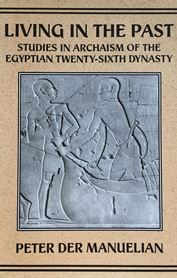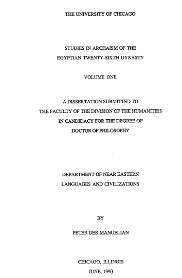| Main » Ad Board » ДРЕВЕН ЕГИПЕТ И АФРИКА » Език и писменост |
| 21.09.2016, 12:09 | |
Книгата на станалия известен впоследствие с проучванията си върху мастабите и стелите в некропола Гиза американски учен от арменски произход Питър Дер Мануелян е фокусирана върху лингвистичния анализ на съзнателно употребяваните в древноегипетския език на Късното царство архаизми и обслужваните от тази тенденция идеологически и културни цели. Предмет на изследването са паметниците от Саиската епоха: периодът, през който управляват фараоните от XXVI династия (664-525 г. пр. н.е.) - последните владетели на Египет от местен произход, които полагат началото на Късното царство. Интегрална част от този научен труд са ценните преводи на царски стели от това време: на фараоните Псаметик I (664-610 г. пр. н.е.), Псаметик II (595-589 г. пр. н.е.), Априй (589-570 г. пр. н.е.). Peter Der Manuelian - Living in the Past. Studies in archaism of the Egyptian Twenty-sixth dynasty, London - New York, Kegan Paul International, 1994 - на древноегипетски език (йероглифи и латинска транслитерация) и английски език, от Google Drive, формат PDF. Сваляне с ляв бутон (downloading by left button) от страницата на предоставящия сървър, после през бутона стрелка надолу/after by down arrow button. КАТО ДИСЕРТАЦИЯ / AS PH.D. THESIS: Peter Der Manuelian - Studies in archaism of the Egyptian Twenty-sixth dynasty. Volume I-III, Chicago (IL), The Chicago University, 1990 - на древноегипетски език (йероглифи и латинска транслитерация) и английски език, от Google Drive, формат PDF. Сваляне с ляв бутон (downloading by left button) от страницата на предоставящия сървър, после през бутона стрелка надолу/after by down arrow button.
| |
| Views: 1610 | Placed till: 21.10.2022 | Rating: 0.0/0 | |


